
2025年3月4日(火)11:20~12:00
第19回錯覚ワークショップ 明治大学
ロトレリーフの研究
1ページ目 
since February 8, 2025 2ページ目はこちら・3ページ目はこちら
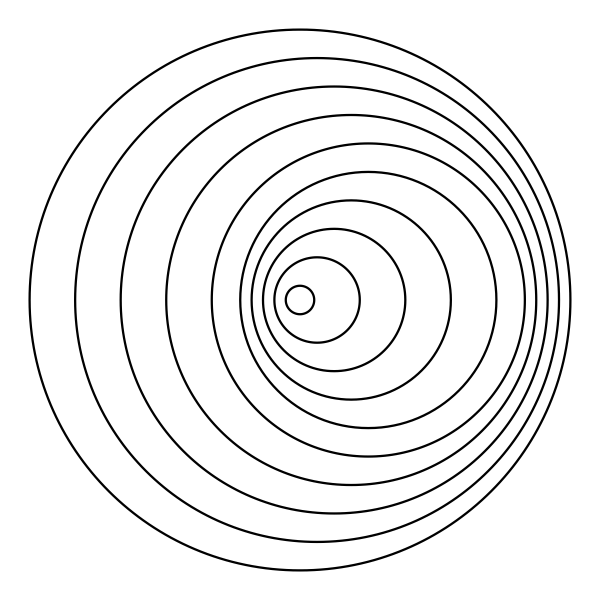
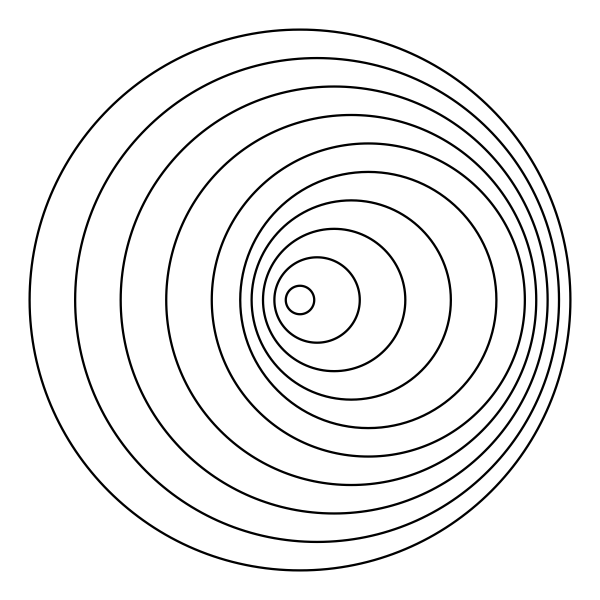
「立体感のあるロトレリーフ」
中心が同じではない複数の円でできている。
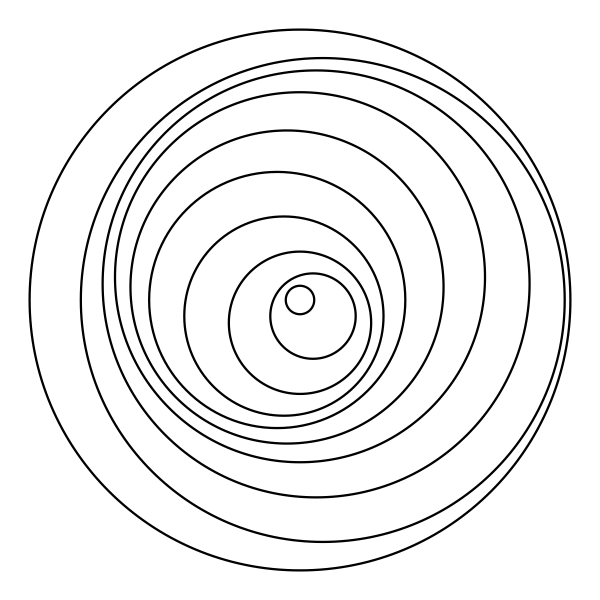
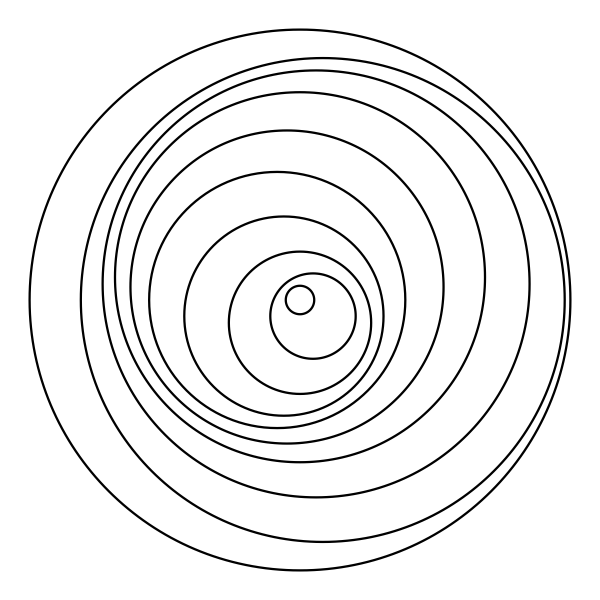
「立体感とゴム感のあるロトレリーフ・その1」
中心が同じではない複数の円でできている。
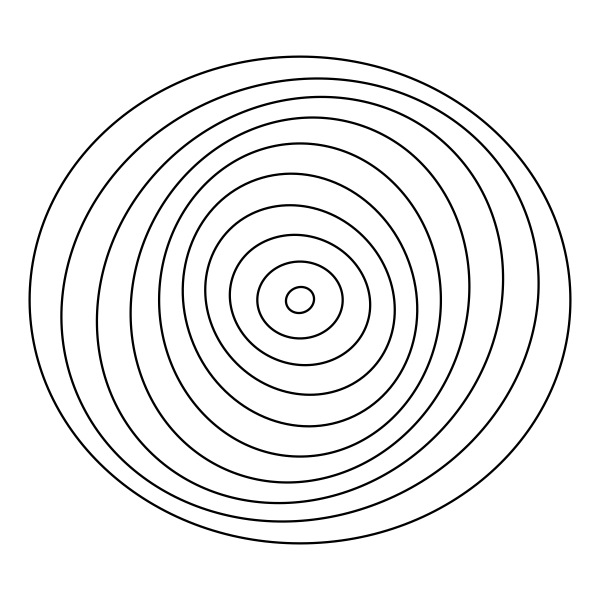
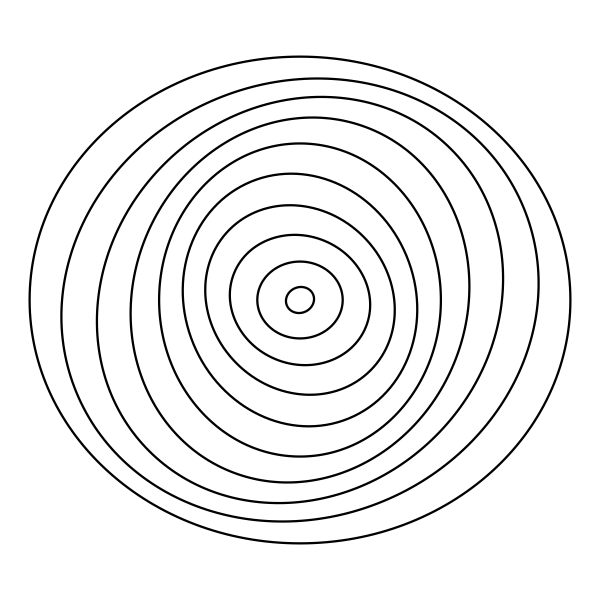
「立体感とゴム感のあるロトレリーフ・その2」
中心が同じ複数の楕円でできている。
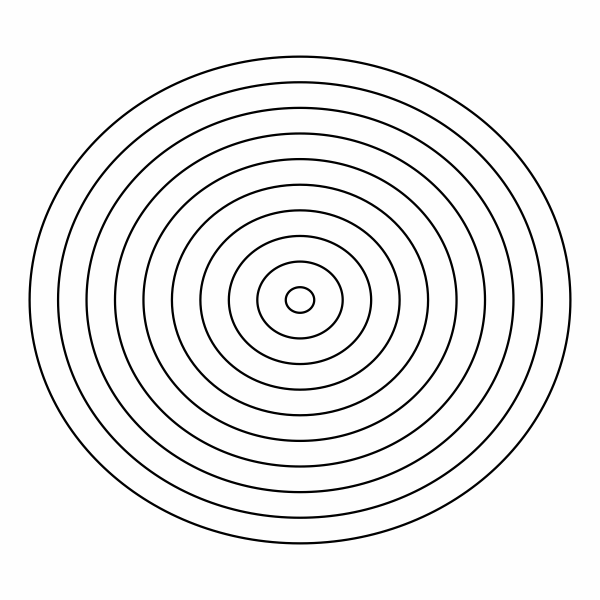
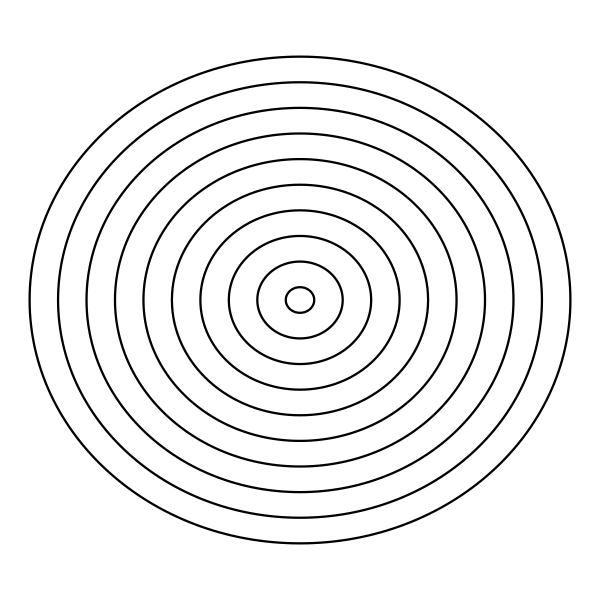
「ゴム感のあるロトレリーフあるいは同心円が乗った平面が奥行き方向に揺いで見えるロトレリーフ」
中心が同じ複数の楕円でできている。
Q: ロトレリーフ(rotorelief)とは何か
A: マルセル・デュシャンが1920~1930年代に提唱した回転円盤による視覚科学的なアートである
メモ/note
マルセル・デュシャン(Marcel DuChamp) (Wikipedia)
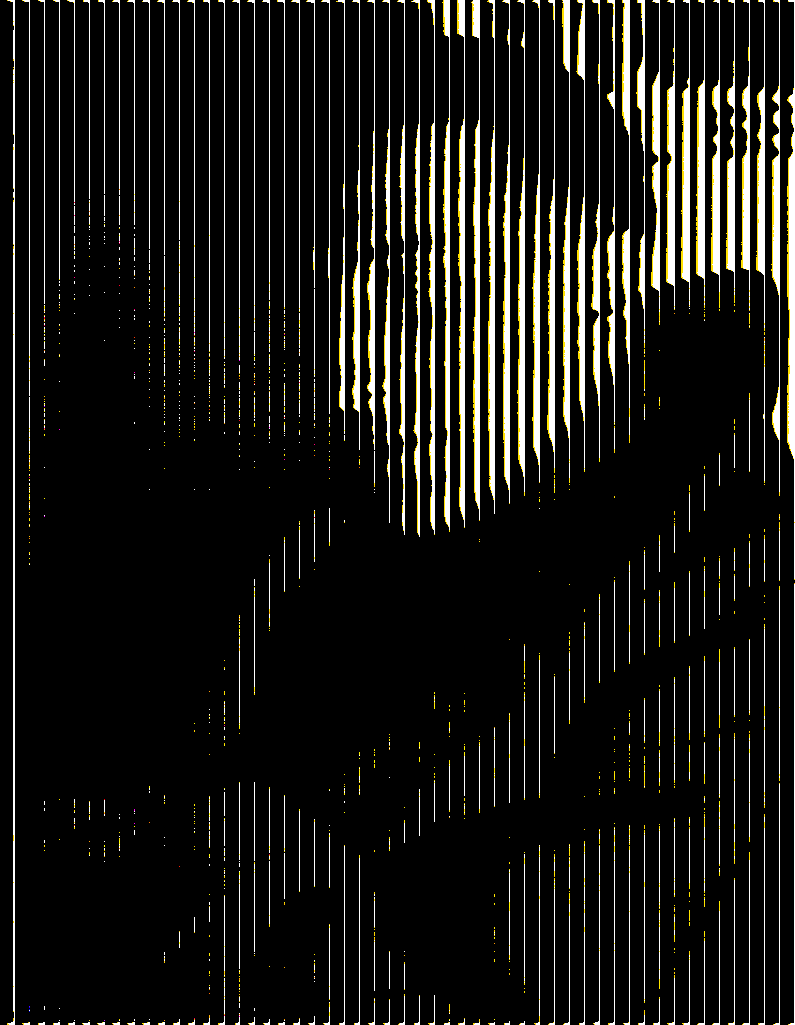
Man Ray, 1920-21, Portrait of Marcel Duchamp, gelatin silver print, Yale University Art Gallery
をオストワルト表色系的並置混色変換したもの
Marcel DuChamp (Wikipedia)
Rotoreliefs were the next phase of Duchamp's spinning works. To make the optical "play toys", he painted designs on flat cardboard circles and spun them on a phonographic turntable. When spinning, the flat disks appeared three-dimensional. He had a printer produce 500 sets of six of the designs, and set up a booth at a 1935 Paris inventors' show to sell them. The venture was a financial disaster, but some optical scientists thought they might be of use in restoring three-dimensional stereoscopic sight to people who have lost vision in one eye.[37]: 301–303 In collaboration with Man Ray and Marc Allégret, Duchamp filmed early versions of the Rotoreliefs, and they named the film Anémic Cinéma (1926). Later, in Alexander Calder's studio in 1931, while looking at the sculptor's kinetic works, Duchamp suggested that these should be called mobiles. Calder agreed to use this novel term in his upcoming show. To this day, sculptures of this type are called "mobiles".[37]: 294
「回転レリーフ」はデュシャンの回転作品の次の段階だった。 光学的な「おもちゃ」を作るために、彼は平らな厚紙の円形にデザインを描き、それをフォノグラフ・ターンテーブルで回転させた。 回転させると、平らな円盤が立体的に見えた。 彼は印刷業者に6枚組500セットを作らせ、1935年のパリの発明家ショーにブースを出して販売した。 この事業は経済的には大失敗に終わったが、一部の光学科学者は、片目の視力を失った人々に立体視を回復させるのに役立つかもしれないと考えた。デュシャンはマン・レイやマルク・アレグレットと共同で、ロトレリーフの初期バージョンを撮影し、この映画を『アネミック・シネマ』(1926)と名付けた。 その後、1931年にアレクサンダー・カルダーのアトリエで、彫刻家のキネティック作品を見ていたデュシャンは、これらをモビールと呼ぶべきだと提案した。 カルダーは、今度の個展でこの斬新な言葉を使うことに同意した。 今日に至るまで、この種の彫刻は「モビール」と呼ばれている。
Anémic Cinéma (Wikipedia)
Anémic cinéma (1926) (YouTube) --- a note by Guggenheim
Rotorelief (1935/1953) (Minnie Muse)
R. K. Merritt, "Intentions: logical and subversive. The art of Marcel
Duchamp, concept visualization, and immersive experience," Proceedings
Fifth International Conference on Information Visualisation, London, UK,
2001, pp. 233-240, https://doi.org/10.1109/IV.2001.942064
Pytel, M. (2013). Eadweard Muybridge: Inverted modernism and the stereoscopic
vision. Early Popular Visual Culture, 11(1), 71–82. https://doi.org/10.1080/17460654.2012.75665
Only a few frames of Duchamp’s stereoscopic film survived. According to an account by Man Ray, they ‘gave the effect of relief’ when viewed through a stereoscope. Ten years later, Duchamp expanded the idea with the development of what he termed ‘Rotoreliefs’, first shown at the opening of the 33rd Concours Lepine, the Salon des Inventions, at the Parc des Expositions, Porte de Versailles, Paris. This perhaps can be seen as a gesture curiously similar to what is purportedly the first mention of Joseph Plateau’s Phenakistoscope, in a journal of household utensils and kitchen recipes; Duchamp took a tiny stand of three square meters to exhibit Rotoreliefs. In a joint venture with Henri Pierre Roche, author and friend of the artistic avant-garde, 500 sets of six coloured cardboard discs were produced, printed on each side and packaged in a black vinyl plastic case. They were designed to be placed on a gramophone. Turning at a certain speed, the disc gave an impression of depth; Duchamp suggested that the optical illusions become more intense when viewed with only one eye. Situated in alley F, stand number 147, some of the discs were turning horizontally and some vertically. Sandwiched between incinerators and a rubbish-compressing machine on the left and an instant vegetable chopper on the right, Duchamp’s invention, awarded an ‘honourable mention’ in the industrial art category, went practically unnoticed by a public whose interest lay in a search for more practical and useful gadgets.
デュシャンの立体映画は数フレームしか残っていない。マン・レイの証言によると、ステレオスコープで鑑賞すると「浮き彫りのような効果」があったという。それから10年後、デュシャンは「ロトレリーフ」と名付けた作品でこのアイデアを発展させ、パリ、ポルト・ド・ヴェルサイユの展示会場で開催された第33回ルパン発明品コンクールで初公開した。これは、家庭用品や料理レシピの雑誌に初めて登場したとされるジョゼフ・プラトーのフェナキスチスコープ(Phenakistoscope)に奇妙なほどよく似た行為であると見なすことができるかもしれない。デュシャンは、3平方メートルの小さなスタンドでローテリリーフを展示した。芸術的前衛の友人である作家アンリ・ピエール・ロッシュとの共同事業で、6枚のカラー厚紙ディスク500セットが製造された。片面ずつ印刷され、黒いビニールケースに梱包された。これらは蓄音機の上に置くように設計されていた。一定の速度で回転するディスクは奥行きのある印象を与え、デュシャンは、錯視効果は片目で見たときに強くなることを示唆した。F列147番のブースに置かれた円盤の中には、水平に回転するものもあれば、垂直に回転するものもありました。 左には焼却炉とゴミ圧縮機、右には即席野菜カッターに挟まれたデュシャンの発明品は、工芸部門で「佳作」を受賞したにもかかわらず、より実用的で便利なガジェットを求める人々にはほとんど注目されませんでした。
メモ/note
ブリジット・ライリーにロトレリーフの作品 "Uneasy Centre" がある。回転させる作品であるという主張なのかどうかは、調べていないので不明。
Bridget Riley, Uneasy Centre, 1963. The Lambrecht-Schadeberg Collection, Museum für Gegenwartskunst Siegen
https://bridget-riley.publications.britishart.yale.edu/catalogue/4/
https://bridget-riley.publications.britishart.yale.edu/ohadi-hamadani/
回してみた。
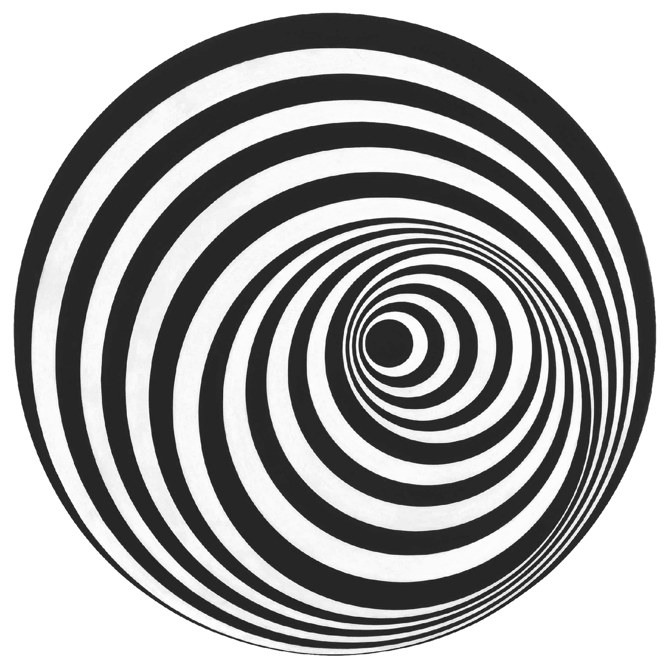
This movie shows rotation of Uneasy Centre (Bridget Riley, 1963).
「立体感のあるロトレリーフ」
の研究
4つの知覚像が交替する画像

8つの知覚像が交替する画像
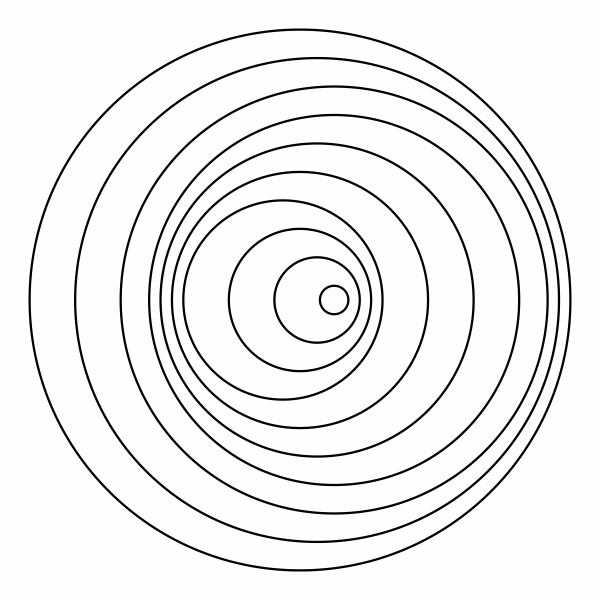
2つの知覚像が交替する画像
(これを用いて説明する)
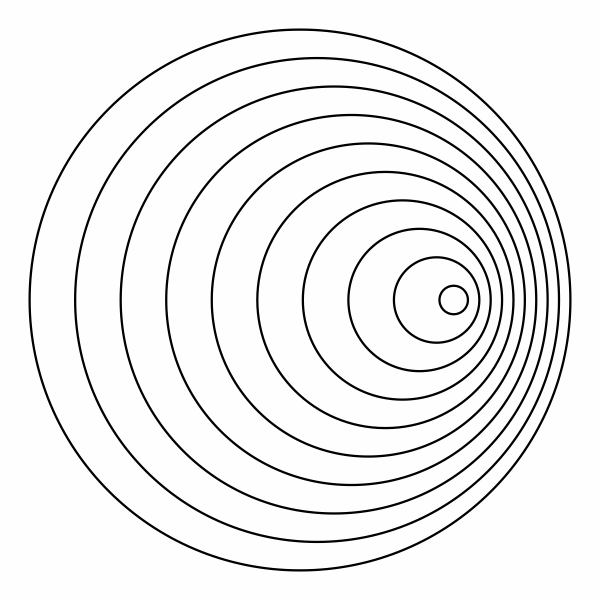
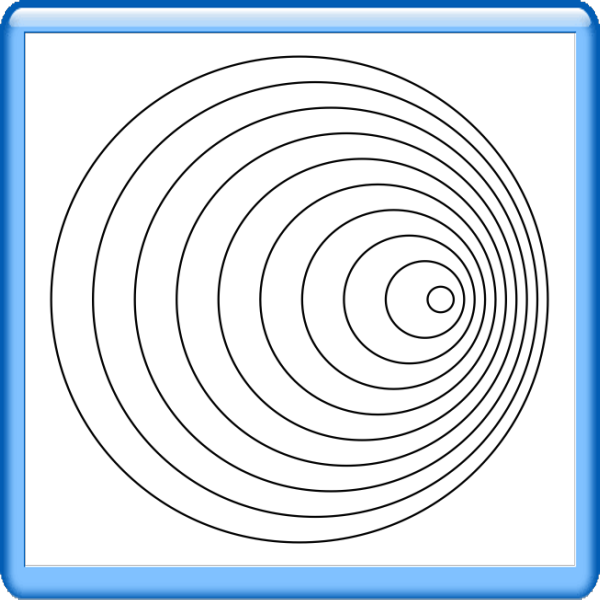
つくり方
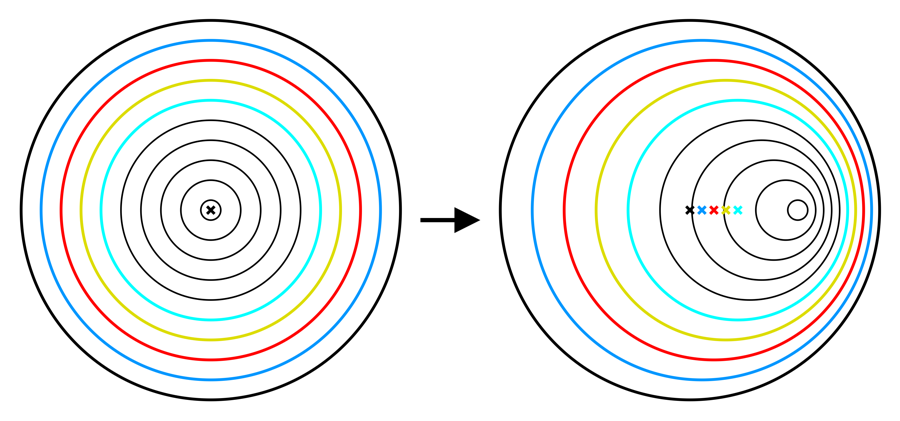
1. 同心円を用意する。
2. 錯視立体の頂点を決める。
3. 同心円の中心と錯視立体の頂点を結ぶ線 l を引く。その長さを d とする。
4. 一番外側の円の半径を r0 とする。
5. 半径 r の円の中心を、l 上の点に移動する。その位置は、錯視立体の頂点から d × r / r0 の距離の点とする。
6. このように変換された同心円を回転させると、剛体的で立体感のあるロトレリーフが観察できる。
中心は静止していて、一番外側が最も多く動いて見えるバリエーションもできる。
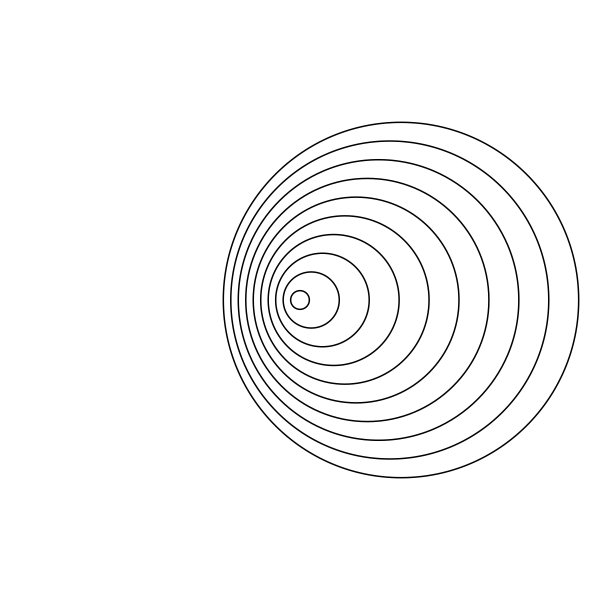

Q: このロトレリーフは任意の画像でもできるか
A: できる
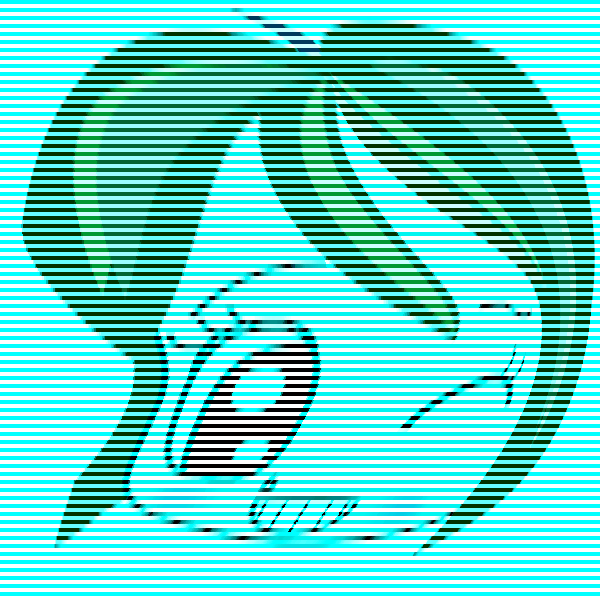
ロトレリーフ作成プログラムの紹介
ロトレリーフ・シングル・any image・時間のかからない優れた作画法
<September 4, 9, 25, October 20, 2024>
Q: 実はさりげなくクリティカルな跳躍をしてしまったのだが、それは何か

A: ロトレリーフは画像を回転させてできるアートとして知られているのだから、任意の画像で同様な効果が得られるのはよいとして、それはロトレリーフと言えないのではないか??
任意の画像で作成した奥行き知覚画像もロトレリーフの発展型(広義のロトレリーフ)として許容することにして、話を先に進めたい。
2ページ目に続く
to be continued